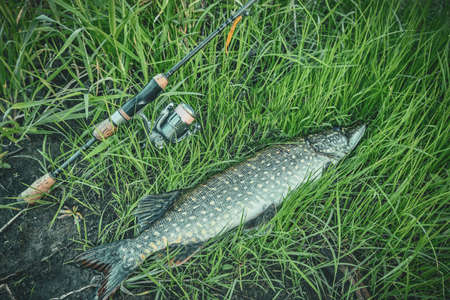Historical Roots of Feeder Fishing in British Waters
Feeder fishing, a cornerstone of the British coarse angling scene, boasts a rich history deeply intertwined with the nation’s waterways and rural communities. Its origins can be traced back to post-war Britain, when local anglers sought efficient methods to target bottom-feeding species such as bream, roach, and tench in classic venues like the River Trent, the Grand Union Canal, and various estate lakes scattered across England’s countryside. In these early days, the gear was rudimentary yet highly functional, often fashioned from lead pipes or drilled bullets paired with homemade groundbait cages. The distinctive challenges posed by each venue—be it powerful river currents or placid stillwaters—inspired innovations in rig design and bait delivery systems. Traditional target species dictated the need for precise feeding tactics; thus, the earliest feeder setups were meticulously adapted to deliver an enticing trail of loose feed directly to wary shoals. This pioneering period established not just technical fundamentals but also the cultural ethos of British feeder fishing: resourcefulness, adaptability, and a profound respect for local waters and their inhabitants.
Technological Advancements in Feeder Tackle
The transformation of feeder fishing tackle in the UK is a testament to both British ingenuity and a deep-rooted passion for angling. From the humble beginnings of homemade feeders, often crafted from old film canisters or drilled lead weights, the evolution has been nothing short of remarkable. British anglers initially relied on basic materials at hand—metal mesh, plastic tubing, and even matchboxes—to create rudimentary bait delivery systems. While effective for their time, these early designs lacked consistency and durability.
With the growing popularity of coarse fishing through the latter half of the 20th century, British tackle manufacturers began to innovate, harnessing advances in materials science and engineering. The transition from makeshift feeders to precision-engineered cages and open-ends marked a pivotal shift. Modern feeders now feature lightweight alloys, corrosion-resistant coatings, and hydrodynamic profiles that ensure accuracy and reliability in a variety of water conditions.
| Era | Common Feeder Materials | Design Innovations | Notable British Brands |
|---|---|---|---|
| 1970s–1980s | Homemade (metal mesh, plastic) | Simple cage/open-end; DIY assembly | N/A (homemade focus) |
| 1990s | Moulded plastics, brass, lead | Standardised sizes; improved casting weights | Drennan, Preston Innovations |
| 2000s–Present | Anodised aluminium, stainless steel, eco-plastics | Interchangeable weights; quick-change systems; micro-mesh designs | Korum, Guru, Matrix |
The likes of Drennan and Preston Innovations pioneered feeder tackle in Britain by introducing moulded plastic feeders with consistent weight distribution and durable construction. More recently, brands such as Korum, Guru, and Matrix have taken things further with modular systems that allow anglers to adapt their rigs swiftly bankside—a critical advantage during competitive matches. Features like interchangeable weights and low-resistance coatings have become standard among top-tier products.
This technological progression has not only elevated the performance of British anglers but also contributed to the global reputation of UK-made tackle for quality and innovation. Today’s feeder setups are a blend of tradition and cutting-edge engineering: proof that British angling culture remains at the forefront of the sport’s evolution.

3. Evolution of Techniques and Approaches
The landscape of feeder fishing within British angling culture has seen remarkable shifts, shaped as much by innovation as by the unique demands of local waters and the competitive scene. Early approaches were often simple, relying on straightforward open-end feeders and basic ledgering tactics. However, as match fishing grew in popularity across the UK—particularly on commercial stillwaters and well-stocked club lakes—anglers began to refine their setups to gain a competitive edge.
Adaptation of Rigs
British anglers have developed a reputation for their ingenuity with rigs. The classic paternoster, once a staple on rivers like the Trent, gradually gave way to modern running and helicopter rigs as fish became increasingly wary. Innovations such as anti-tangle booms and quick-change swivels have become mainstays, allowing for rapid adaptation during matches. These technical enhancements reflect not just advances in materials but also a deep understanding of fish behaviour under pressure.
Baiting Tactics: From Tradition to Precision
Baiting strategies have evolved significantly alongside the hardware. While bread punch and maggots remain firm favourites for silvers, the introduction of groundbaits specifically formulated for feeder work has transformed how anglers attract fish. Methods such as ‘the method feeder’—where bait is moulded around a flat feeder—have become synonymous with British commercial carp fisheries, offering targeted delivery that suits the cautious feeding patterns seen in pressured venues.
Rod Selection: Purpose-Built for British Waters
Rod development has kept pace with these tactical advancements. Where once a general-purpose quiver tip rod sufficed, today’s anglers select from an array of purpose-built rods tailored for distance casting or close-in accuracy, depending on the venue. Shorter rods are now commonplace on narrow canal pegs, while longer models with progressive actions dominate big-water events where reach and finesse are paramount.
The continued evolution of techniques and approaches in British feeder fishing is a testament to both the competitive spirit and adaptability of the nation’s anglers, ensuring that gear and tactics remain finely tuned to the ever-changing challenges posed by local waters and high-stakes matches.
4. Influence of British Competitions and Iconic Venues
Match fishing has always been at the heart of the UK’s angling culture, with competitions on rivers, canals, and commercial fisheries playing a pivotal role in shaping feeder fishing gear and setups. The unique demands of these venues have driven British anglers to refine their approach, producing trends and techniques now synonymous with the UK scene.
Adapting to Different Waters
The diversity of British waters has necessitated a highly adaptable approach to feeder fishing. Rivers such as the Trent or Thames require long-casting distance feeders and robust tackle to cope with flow and larger fish, while narrow canals demand finesse and precision. Commercial fisheries, often stocked with carp, favour method feeders and short rods for tight swims. This variety has led manufacturers to innovate specialised gear optimised for each scenario.
Gear Evolution Driven by Competition
| Venue Type | Feeder Style | Typical Rods | Mainline Choices | Key Tactics |
|---|---|---|---|---|
| River | Cage & Open-End Feeders | 12ft+ Medium/Heavy Feeder Rods | Mono or Braided (6-10lb) | Distance Casting, Holding Bottom |
| Canal | Mini Cage Feeders, Bombs | 9–11ft Light Feeder Rods | Light Mono (3-5lb) | Accuracy, Subtle Presentation |
| Commercial Fishery | Method & Pellet Feeders | 9–10ft Carp Feeder Rods | Strong Mono/Braid (8-12lb) | Tight Margins, Quick Bites |
The Competitive Edge: Trends Born from the Bank
The pressure to outperform rivals in matches has seen British anglers develop several now-iconic methods. The Method feeder revolutionised carp catching on commercials by delivering groundbait-packed payloads directly to the hookbait. On rivers, heavy cage feeders enable precise baiting on powerful flows. Meanwhile, canal specialists have perfected light bomb tactics for shy-biting roach and skimmers. These innovations reflect a culture where competitive edge drives continual refinement.
Cultural Impact of Iconic Venues
Venues like Barston Lakes, the River Nene, and the Grand Union Canal have become testing grounds for new ideas. Successful match tactics quickly gain traction nationwide, influencing both tackle development and grassroots club angling. In essence, Britain’s match fishing heritage has not only shaped how feeder fishing is practised but also defined the very gear that fills tackle boxes across the country.
5. Cultural Impact and Community Knowledge-Sharing
The rich tapestry of British feeder fishing is inseparable from the vibrant culture that surrounds it, with knowledge-sharing at its very core. Angling clubs have long acted as the bedrock of local communities, providing a forum where seasoned anglers and newcomers alike exchange tips on feeder rig setups, bait preferences, and watercraft skills. These clubs not only foster camaraderie but also serve as living archives for regional best practices, ensuring that tried-and-tested techniques are preserved and continually refined.
Magazines such as Angling Times and Total Coarse Fishing have played an instrumental role in disseminating expert insights to a broader audience. In-depth gear reviews, technical breakdowns of new feeders, rods, and lines, as well as coverage of innovative setups used in high-profile matches, help bridge the gap between grassroots anglers and the sports leading tacticians. The print media’s traditional authority has set standards for what constitutes effective practice, often sparking trends that ripple out across fisheries nationwide.
In recent years, online platforms have turbocharged this culture of collective innovation. Forums like The Fishing Forum UK and social media groups allow real-time discussion and peer review of emerging tactics or newly-released tackle. YouTube channels run by prominent British feeder anglers provide step-by-step demonstrations of advanced rigs, while blogs and podcasts offer deep dives into the nuances of venue-specific approaches. This digital connectivity has democratised access to expertise; even those far from established angling hubs can now stay abreast of the latest developments.
The cumulative effect is a dynamic feedback loop: innovations trialled by individuals are quickly scrutinised and adapted by the wider community. Best practices are no longer guarded secrets but shared assets, creating an environment where progressive experimentation is both encouraged and celebrated. Whether it’s a subtle tweak to a method feeder presentation or a radical new groundbait mix, British feeder anglers collectively drive the evolution of their sport through relentless dialogue and shared passion.
6. Future Directions: Sustainability and Modern Trends
Eco-Friendly Materials: A Shift in Consciousness
The British feeder fishing community is increasingly recognising the need for sustainability in both gear and practice. Recent years have seen a noticeable move away from single-use plastics and non-biodegradable materials, with many anglers favouring biodegradable feeders, lead-free weights, and tackle made from recycled components. This shift isn’t just about ticking eco-boxes; it’s about preserving the very waterways that define British angling culture. Clubs and competitions are also reinforcing these values through stricter regulations on littering and by encouraging the use of sustainable bait alternatives, such as responsibly sourced groundbaits and plant-based attractants.
Digital Integration: Technology at the Water’s Edge
Modern British anglers are embracing digital technology to refine their feeder fishing strategies. Fish finders, underwater cameras, and smartphone apps now play a role in mapping swims, tracking conditions, and logging catches. Social media platforms and online forums foster rapid knowledge exchange, allowing techniques and gear innovations to spread across the country with unprecedented speed. While some traditionalists view this digital shift with scepticism, there’s no denying that technology has democratised information, making advanced tactics accessible to all skill levels.
Cultural Response: Adapting to Environmental and Social Change
As climate change alters water temperatures and river flows across the UK, feeder fishing setups are evolving in response. More robust gear is being developed to withstand unpredictable conditions, while conservation-minded anglers are advocating for habitat restoration and fish welfare initiatives. The social aspect of British angling is also transforming—there’s a growing emphasis on inclusivity, with more women, young people, and ethnically diverse participants joining clubs and competitions. This broadening demographic is shaping not just the future of feeder fishing gear but also the ethos of British angling itself.
The Road Ahead: Balancing Tradition with Innovation
Looking forward, the evolution of feeder fishing in Britain will depend on striking a balance between cherished traditions and modern innovation. By continuing to champion sustainability, integrate technology judiciously, and welcome new voices into the sport, British anglers can ensure that feeder fishing remains both culturally vibrant and environmentally responsible for generations to come.


